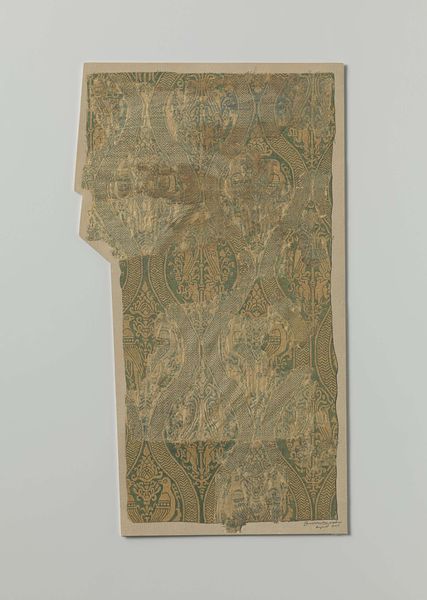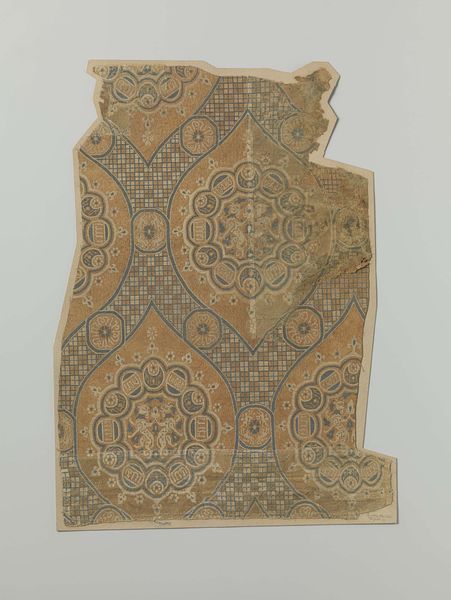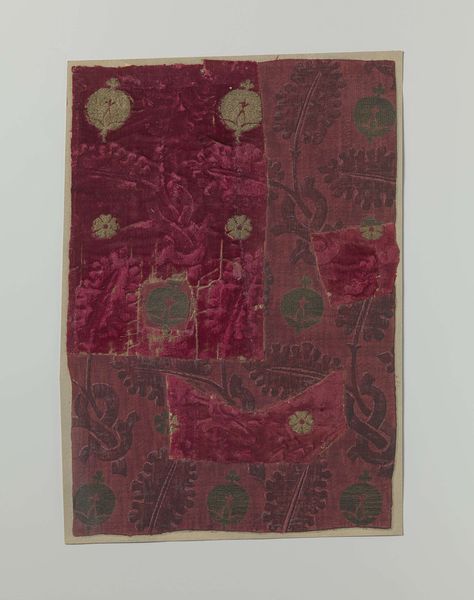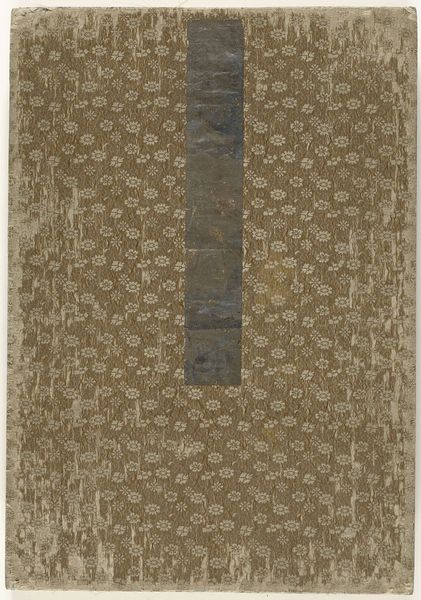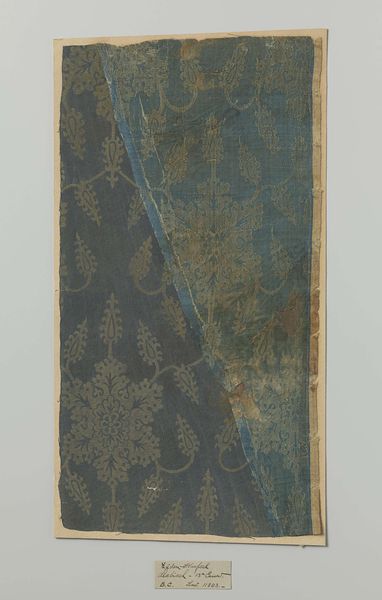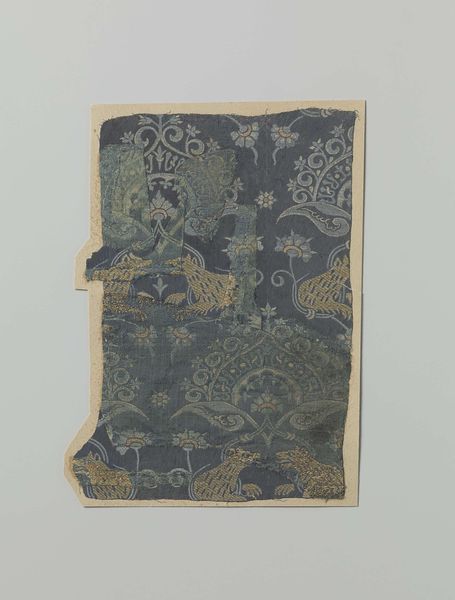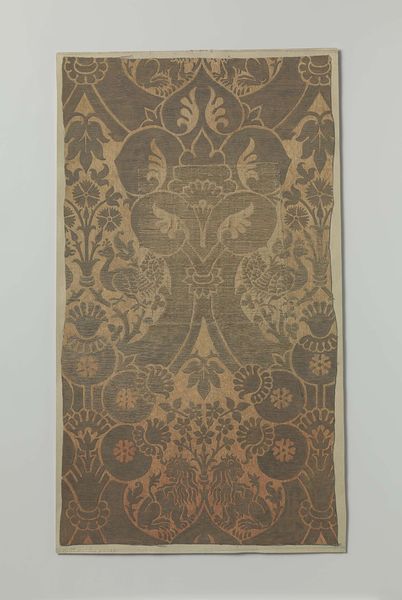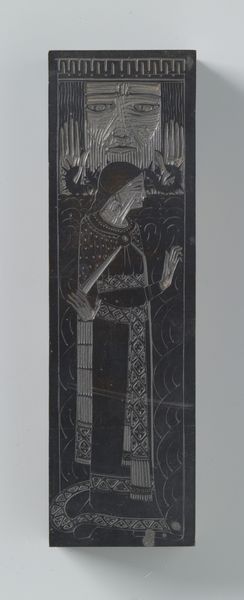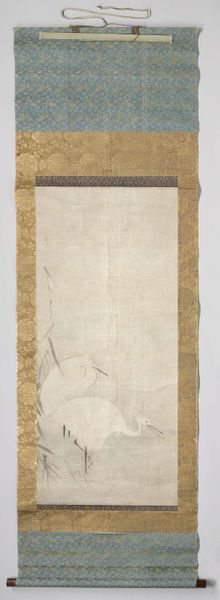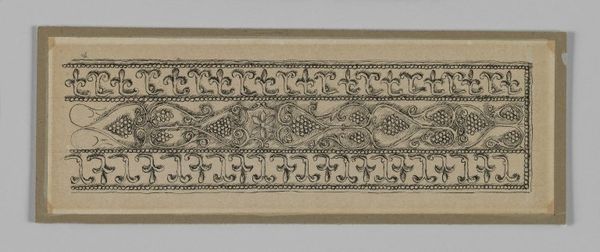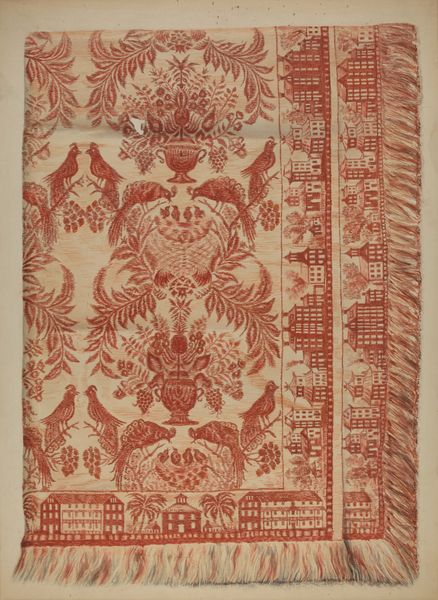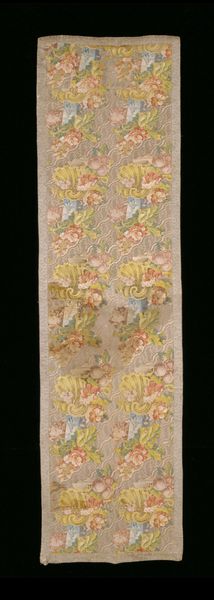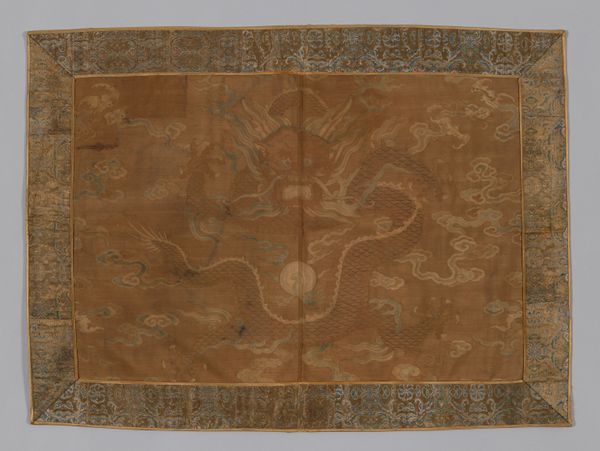
Fragment van wit met blauw gestreepte zijdelampas met patroon van stengels met bladeren waarin granaatappels zijn gevat en kleinere bloemtakken c. 1700 - 1750
0:00
0:00
weaving, textile
#
baroque
#
weaving
#
textile
#
repetition of pattern
#
regular pattern
#
pattern repetition
#
decorative-art
#
imprinted textile
#
layered pattern
Dimensions: height 74 cm, width 27.4 cm, width 0.4 cm
Copyright: Rijks Museum: Open Domain
Curator: Looking at this fragment of white and blue striped silk lampas, dating roughly from 1700 to 1750 and attributed to James Leman, one can't help but notice its elegance. Editor: It evokes a certain somber mood. The muted blue against the faded white gives it an air of quiet melancholy, despite the baroque ornamentation. You can tell a lot of work went into this imprinted textile, so what purpose was it intended to serve? Curator: Well, these decorative arts during the Baroque period often served purposes far beyond mere aesthetics. The textile likely adorned a wall or perhaps upholstered furniture in a home of considerable wealth and status, reinforcing prevailing class structures. Considering the East India Company's role in global trade during that time, it might tell an interesting story about power dynamics and colonial narratives. Editor: Absolutely. The material itself, silk, points to a complex web of global trade networks, weaving together narratives of labor, class, and consumption. We need to look at where it was produced, by whom, and under what conditions. These striped patterns suggest something almost mechanically reproduced. What does its construction tell us about divisions of labour in workshops and artisanal guilds during this era? Curator: That's an insightful point. Moreover, I can’t ignore the symbolism inherent in the pomegranate motifs and the arrangement of the flower stalks. How does this composition reinforce societal expectations or perhaps challenge gender roles prevalent in the early 18th century? After all, textile production was so intimately linked to the work of women. Editor: The focus on repetitive pattern might invite considerations of early industrial practices, where techniques were being developed for standardized production. This challenges the boundaries of where "fine art" begins. How much of the weaver’s skill is down to free creativity versus simply following instructions? The textile asks interesting questions. Curator: Examining objects like these offers a richer understanding of the intersectional narratives encompassing gender, race, and power of this era. Editor: Agreed. Investigating the methods of creating, and their cultural contexts allows a more insightful comprehension of how historical crafts influence current discussions about labor and artistic recognition. Curator: Indeed. These discussions offer fresh perspectives into the ways cultural objects function within history and impact contemporary thoughts. Editor: Right. Let’s examine it up close later to consider the nuances of materiality and cultural context even more clearly.
Comments
No comments
Be the first to comment and join the conversation on the ultimate creative platform.
